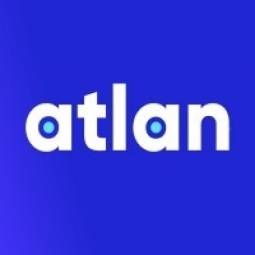Technology Category
- Infrastructure as a Service (IaaS) - Cloud Middleware & Microservices
- Sensors - Autonomous Driving Sensors
Applicable Industries
- Buildings
- Cement
Applicable Functions
- Quality Assurance
- Sales & Marketing
Use Cases
- Inventory Management
- Time Sensitive Networking
Services
- System Integration
- Training
About The Customer
Elastic is a legendary technology company that started as a search engine built by Shay Banon in 2000. It has since grown into a company that powers search solutions, helps applications run smoothly, and protects against cyber threats for the world’s most respected organizations. With a rich history in open source, Elastic's offerings are built on a foundation of simplicity, speed, scale, and relevance, and powered by data. The company is distributed by nature, and its team comes from diverse backgrounds, with vast differences in geography and culture. This makes it crucial for any solution to be relevant and personalized to a spectrum of needs, expectations, and skill sets.
The Challenge
Elastic, a technology company that powers search solutions and protects against cyber threats, faced several challenges in its data practice. Takashi Ueki, Director of Enterprise Data & Analytics at Elastic, identified multiple sources of truth leading to disconnected reporting, a BI platform strategy that was misaligned with organizational needs, and varying definitions making it difficult to accurately and consistently report. Elastic's distributed and remote nature, along with its diverse team, made it crucial for any solution to be relevant and personalized to a spectrum of needs, expectations, and skill sets. The company's data governance strategy needed to drive transparency, accountability, and engagement, and be embedded seamlessly into the day-to-day experience of its distributed workforce.
The Solution
To address these challenges, Elastic's data team considered technology that could deliver fit-for-purpose experiences to their diverse stakeholders, make clear available data and capabilities, and serve as a collaboration layer. They moved forward with proofs of concept with four vendors, ultimately choosing Atlan for its clean UI, ease of adoption, and integration with their current stack. Atlan became a crucial part of Elastic’s data architecture toolkit, helping to make more informed decisions, better onboard users, and drive efficiency. The team spent roughly 4 weeks to integrate key data sources and invite a core set of users, enriching data assets, defining terms, and utilizing automated lineage. They integrated key systems like BigQuery, dbt, Tableau, and Fivetran, enabled seamless login with Okta, and used Slack to share data assets and track data issues.
Operational Impact
Quantitative Benefit

Case Study missing?
Start adding your own!
Register with your work email and create a new case study profile for your business.
Related Case Studies.

Case Study
System 800xA at Indian Cement Plants
Chettinad Cement recognized that further efficiencies could be achieved in its cement manufacturing process. It looked to investing in comprehensive operational and control technologies to manage and derive productivity and energy efficiency gains from the assets on Line 2, their second plant in India.

Case Study
Energy Saving & Power Monitoring System
Recently a university in Taiwan was experiencing dramatic power usage increases due to its growing number of campus buildings and students. Aiming to analyze their power consumption and increase their power efficiency across 52 buildings, the university wanted to build a power management system utilizing web-based hardware and software. With these goals in mind, they contacted Advantech to help them develop their system and provide them with the means to save energy in the years to come.

Case Study
Intelligent Building Automation System and Energy Saving Solution
One of the most difficult problems facing the world is conserving energy in buildings. However, it is not easy to have a cost-effective solution to reduce energy usage in a building. One solution for saving energy is to implement an intelligent building automation system (BAS) which can be controlled according to its schedule. In Indonesia a large university with a five floor building and 22 classrooms wanted to save the amount of energy being used.

Case Study
Powering Smart Home Automation solutions with IoT for Energy conservation
Many industry leaders that offer Smart Energy Management products & solutions face challenges including:How to build a scalable platform that can automatically scale-up to on-board ‘n’ number of Smart home devicesData security, solution availability, and reliability are the other critical factors to deal withHow to create a robust common IoT platform that handles any kind of smart devicesHow to enable data management capabilities that would help in intelligent decision-making

Case Study
Protecting a Stadium from Hazardous Materials Using IoT2cell's Mobility Platform
There was a need for higher security at the AT&T Stadium during the NFL draft. There was a need to ensure that nuclear radiation material was not smuggled inside the stadium. Hazmat materials could often be missed in a standard checkpoint when gaining entry into a stadium.








